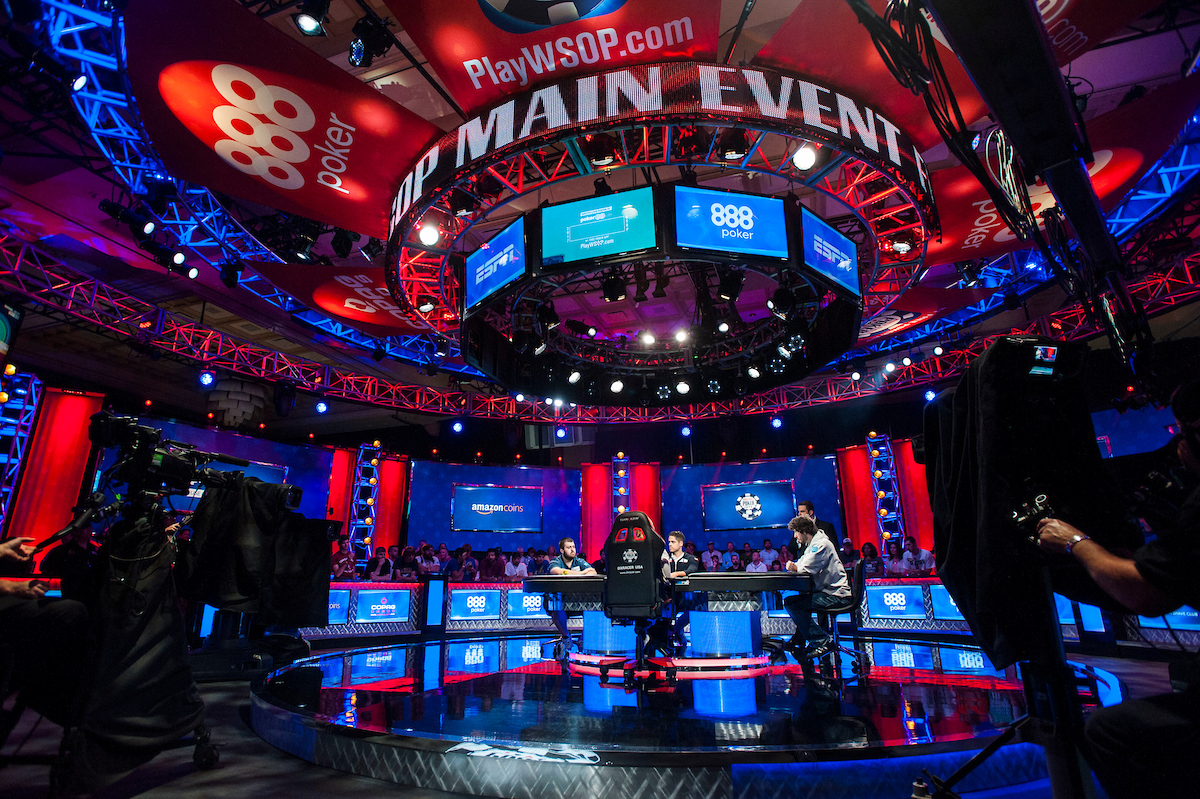
WSOP Main Event Field Swells to Near Record Proportions
The 2018 World Series of Poker (WSOP) Main Event has enjoyed an impressive upswing this year as the final field surpassed 7,800 players for the first time since 2006.

Players will pack the Rio as the WSOP Main Event field swells to its second largest total. (Image: heavy.com)
Following three starting flights inside the Rio All-Suite Hotel and Casino, the $10,000 WSOP Main Event ticker stopped at 7,874. As ever, Day 1C was the best attended with the cashiers’ desk taking entrance fees from 4,571 players.
Stats Don’t Lie
When the first Day 2 got underway on July 6, the statisticians at WSOP HQ were busy running the numbers. Comparing this year’s Big Dance to last year’s tango, the attendance figure was up by nine percent.
In context, the 2018 Main Event has become the second largest of all time. Although the final total is still almost 1,000 players short of the number recorded in 2006, the result is a clear sign that the poker industry is returning to full strength.
The WSOP is regarded as a measuring stick for the state of the poker economy, generating the second largest prizepool in history will be seen as a positive. What’s more, with the success of live events providing an indication as to how well the online economy is doing, the latest news should buoy players and operators alike.
WSOP Upswing is a Positive for Poker
Although there is still a long way to go with regards to online poker regulation in the US, there are some glimmers of hope on the horizon. The liquidity sharing pact between New Jersey, Delaware and Nevada is proving popular with players while the recent sports betting ruling could bolster poker’s position.
With the Professional and Amateur Sports Protection Act (PASPA) being deemed unconstitutional by the Supreme Court, advocates are now looking for ways to bring poker into the mix. Already Rep. Joe Barton (R-TX) is weighing up how he can add poker into a federal horse racing bill and similar efforts could follow.
While the recent changes aren’t a guarantee that online poker will be regulated across the US, it’s a sign that the winds of change are blowing. Between these gusts and burgeoning attendance figures at the WSOP, those with an interest in poker may finally have a reason to smile.
WSOP Attendance Figures Since 2000
As poker came out of a decline in the late nineties, the WSOP saw Main Event numbers swell. By the time Chris Moneymaker won the title in 2003, the tournament had surpassed all expectations to become a mass-market event with six-figure fields.
2000 – 512 runners – $5,120,000 prizepool
2001 – 613runners – $5,946,220 prizepool
2002 – 631 runners – $5,931,000 prizepool
2003 – 839 runners – $7,802,700 prizepool
2004 – 2,576 runners – $24,224,400 prizepool
2005- 5,619 runners – $52,818,610 prizepool
2006 – 8,773 runners – $82,512,162 prizepool
2007 – 6,358 runners – $59,784,954 prizepool
2008 – 6,844 runners – $64,333,600 prizepool
2009- -6,494 runners – $61,043,600 prizepool
2010 – 7,319 runners – $68,798,600 prizepool
2011 – 6,865 runners – $64,531,000 prizepool
2012 – 6,598 runners – $62,021,200 prizepool
2013 – 6,352 runners – $59,708,800 prizepool
2014 – 6,683 runners – $62,820,200 prizepool
2015 – 6,420 runners – $60,348,000 prizepool
2016 – 6,737 runners – $63,327,800 prizepool
2017 – 7,221 runners – $67,877,400 prizepool
2018 – 7,874 runners – $74,015,600 prizepool















0 Comments